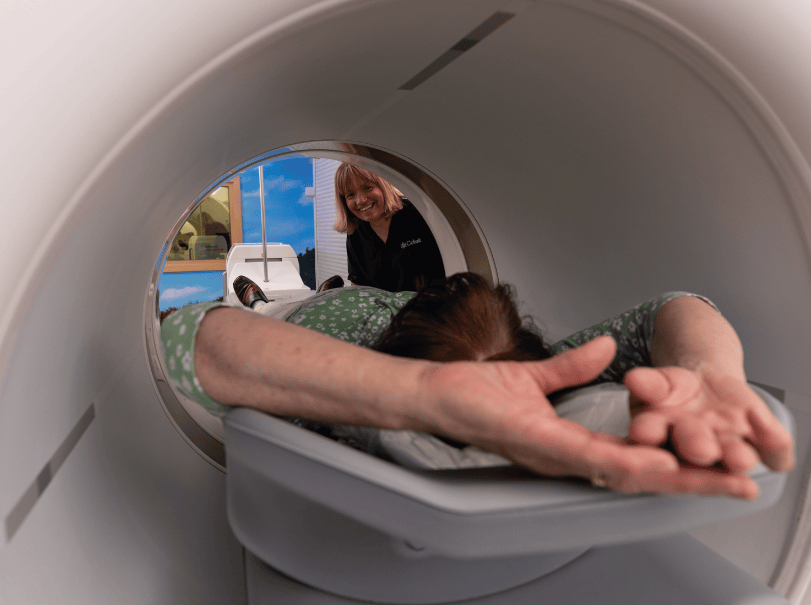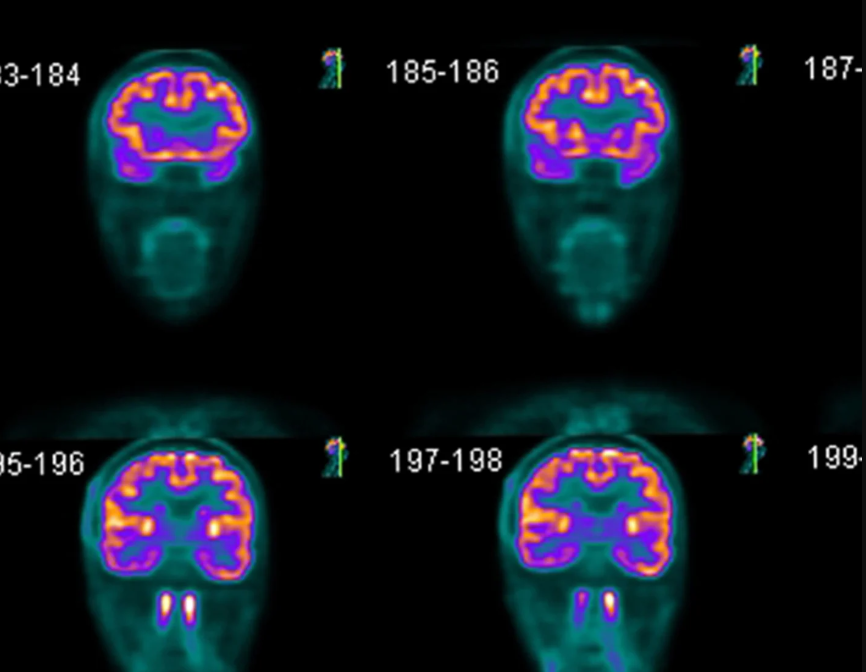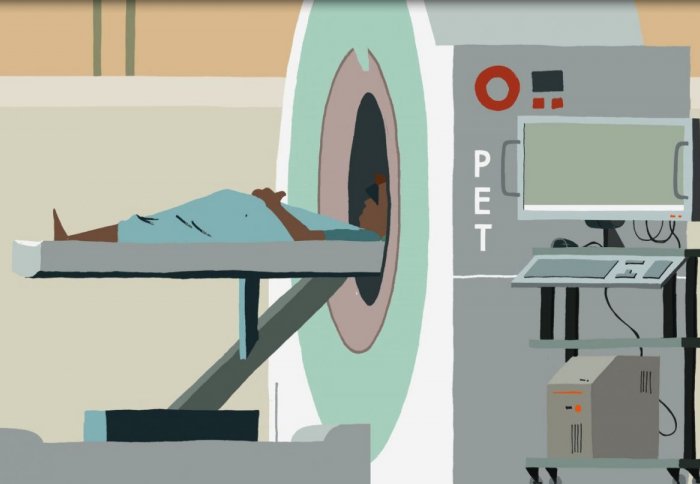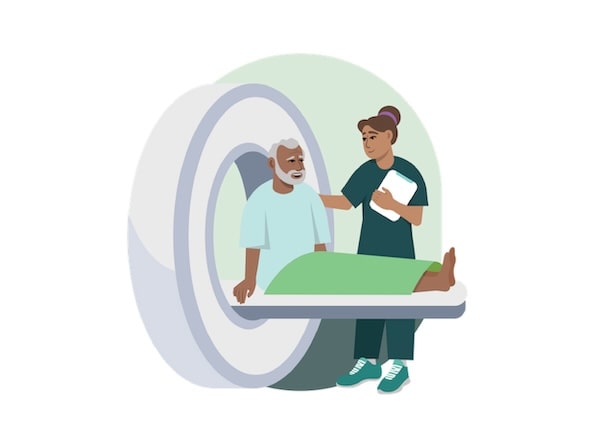When your doctor orders a PET scan, anxiety often kicks in immediately, with most patients asking is PET scan painful. The short answer is that PET scans themselves are not painful procedures.
However, understanding the complete picture involves examining several factors that might cause mild discomfort, which are often the sources of confusion that lead people to worry about pain.

Why People Think PET Scans Are Painful
The concern about pain during PET scans stems from fundamental misunderstandings about what the procedure involves, confusion with other medical tests, and anxiety about the unknown. Once you understand what actually happens during a PET scan and why certain steps are necessary, the fear of pain typically disappears completely.
Many people mix up PET scans with more invasive procedures they’ve heard about or experienced. The name “scan” gets lumped together with procedures like biopsies, bone marrow extractions, or even MRI scans that require staying still in tight spaces for long periods. When someone hears they need a “nuclear medicine scan,” their mind might jump to radiation treatments for cancer, which can indeed cause discomfort.
The injection component of PET scans also creates significant confusion. People think about painful injections they’ve had in the past, perhaps vaccinations, blood draws from difficult veins, or IV insertions in emergency situations. They imagine the PET scan injection will be similarly uncomfortable, when in reality, it’s typically no different from a routine blood test.
The word “radioactive” in the context of PET scans triggers fear responses in many people. This fear gets translated into expectations of physical discomfort, even though radiation exposure during a PET scan doesn’t cause any sensation at all. Your body cannot feel radiation at the diagnostic levels used in medical imaging, much like trying to feel radio waves from your car stereo.
Medical procedures often get distorted through word-of-mouth stories. Someone might hear about a difficult experience another person had, perhaps they had trouble with IV insertion, felt claustrophobic, or had an allergic reaction. They assume this represents the typical PET scan experience, when these stories actually represent unusual circumstances rather than normal experiences.
The Reality of PET Scan Discomfort
Understanding what actually happens during the procedure helps separate realistic expectations from unfounded fears. PET scans involve two main phases that patients experience differently.
The first phase includes the injection of a radioactive sugar solution, followed by a waiting period of 45-60 minutes. During this time, you’ll sit quietly in a comfortable room while the radioactive sugar travels through your bloodstream and gets absorbed by your body’s cells. The injection goes into a vein in your arm, just like having blood drawn or receiving an IV. The needle stick feels exactly like any other injection, involving a brief pinch that lasts only a second or two.

The radioactive tracer itself doesn’t cause any sensation as it enters your bloodstream. You won’t feel it traveling through your body, and there’s no burning, tingling, or unusual sensations. Some people worry they’ll feel “radioactive” or notice the substance affecting them, but the tracer is designed to behave exactly like regular sugar in your bloodstream. Occasionally, people experience a slight metallic taste in their mouth after the injection, but this is mild and brief.
The second phase involves the actual scanning, which takes place on a table that slides through a large, donut-shaped machine. This part typically lasts 20-30 minutes, during which you need to remain still while the machine detects the radioactive signals from inside your body. The machine itself makes some quiet humming sounds, but nothing like the loud noises associated with MRI scanners.
The actual scanning portion of a PET scan is completely painless. You’ll lie on a padded table that moves slowly through the scanner opening. Unlike MRI machines, PET scanners have large openings and don’t create feelings of claustrophobia for most people. The space around you remains open, and you can see the technologist through a window. The main challenge during scanning is remaining still for 20-30 minutes, which can become uncomfortable if you have arthritis, back problems, or simply find it difficult to stay in one position.
Preparing Your Body and Mind for Comfort
Your preparation starts 24 hours before your PET scan with dietary modifications that can significantly impact your comfort level. You’ll need to follow a low-carbohydrate diet the day before your scan, then fast for 4-6 hours before your appointment. This fasting helps ensure the radioactive sugar gets absorbed where doctors need to see it most clearly.
Plan your fasting period carefully to avoid arriving at your appointment feeling weak or lightheaded. If your scan is scheduled for early morning, you might fast from dinner the night before. For afternoon appointments, you might eat a light, low-carb breakfast and then fast until after your procedure.
Stay well-hydrated by drinking plenty of water up until two hours before your scan. Good hydration makes blood draws easier and helps your body process the radioactive tracer more efficiently. However, avoid drinking large amounts right before your appointment, as you’ll need to remain still during the scan and won’t be able to use the restroom.
Anxiety can make any medical procedure feel more uncomfortable than it actually is. Your body’s stress response can increase muscle tension, make you more sensitive to sensations, and create symptoms like nausea or dizziness that have nothing to do with the scan itself. Practice relaxation techniques in the days leading up to your scan. Deep breathing exercises, progressive muscle relaxation, or meditation can help you develop skills you’ll use during the procedure.

Consider bringing comfort items to your appointment. Most facilities allow you to bring music, audiobooks, or podcasts to listen to during the waiting period. Some people find it helpful to bring a book or magazine, though you’ll need to avoid strenuous mental activity that might affect how your brain uses the radioactive sugar.
Don’t hesitate to discuss your concerns with the nuclear medicine technologist performing your scan. They can explain exactly what will happen at each step, show you the scanning room beforehand, and address specific worries you might have. Most technologists are experienced in helping anxious patients and can offer practical tips based on your particular concerns.
Making the Experience More Comfortable
The injection typically takes place in a quiet, private room where you can sit in a comfortable chair. Let the technologist know if you prefer to lie down during injections or if you have a history of fainting. They can adjust the setup to accommodate your needs. Look away from the injection site if needles make you uncomfortable, and focus on taking slow, deep breaths or engage in conversation with the technologist.
After your injection, you’ll spend 45-60 minutes in a quiet room while the radioactive tracer distributes throughout your body. This waiting period can actually be one of the most relaxing parts of your day if you approach it with the right mindset. Bring entertainment that doesn’t require intense concentration, such as light reading, gentle music, or simple puzzles. Use this time for meditation or relaxation exercises, as the quiet environment and lack of distractions create an ideal setting for stress reduction.
During the scanning process, find a comfortable position before the scan begins, and let the technologist know if you need any adjustments. Focus on your breathing during the scan, as slow, steady breathing helps you relax and also minimizes body movement that could affect image quality. Keep your eyes closed if that helps you relax, or focus on a spot on the ceiling if you prefer to keep them open.
What Could Cause Actual Discomfort
The most common source of discomfort during PET scans comes from maintaining the same position for 20-30 minutes. If you have arthritis, back pain, or other musculoskeletal issues, lying still on a firm table can become uncomfortable over time. Communicate with your technologist about any physical limitations before the scan begins, as they can provide additional padding or adjust your position slightly.

While rare, some people experience minor reactions at the injection site, such as slight bruising, temporary soreness, or minor swelling. These reactions are typically no more significant than what you might experience after any blood draw or vaccination. Most injection site reactions resolve within a day or two without any treatment.
Although PET scanners have large openings and don’t typically trigger claustrophobia, some people still feel anxious about being inside any medical device. This anxiety can manifest as physical symptoms like rapid heartbeat, sweating, or feeling short of breath. The scanning room remains well-lit, and you can see the technologist at all times through a window, with a call button available if you need to communicate during the scan.
After Your Scan
Most people feel completely normal immediately after a PET scan. There are no side effects from the radiation exposure, and the radioactive tracer doesn’t cause any ongoing sensations. You can typically resume all normal activities right away, including driving, working, and exercising. The injection site might feel slightly tender for a few hours, similar to after any injection.
Drinking plenty of water after your PET scan helps flush the radioactive tracer from your system more quickly. While your body will eliminate the tracer naturally within 24-48 hours, good hydration speeds this process and reduces your overall radiation exposure. There are no dietary restrictions after your PET scan, and you can eat normally as soon as you feel hungry.
While you don’t need to take special precautions for yourself after a PET scan, there are minor considerations for protecting others from unnecessary radiation exposure. The amount of radiation involved is small, similar to what you’d receive from a cross-country flight. Pregnant women and small children are more sensitive to radiation exposure, so you might want to limit close contact with them for the rest of the day.
The procedure involves minimal discomfort, and any anxiety you feel can be managed with proper preparation and communication with your healthcare team. By approaching your PET scan with realistic expectations based on accurate information, you can focus on the valuable medical information it will provide rather than worrying about unnecessary pain or discomfort.
